Flocculants for water treatment: READ-CX
ー Inorganic flocculants facilitate, “READ-CX” can purify the contaminated water by coagulating and precipitating the hazardous substances. Inorganic flocculants facilitate, “READ-CX” have different features than conventional flocculants and have many different applications.
Features of “READ-CX” flocculants for water treatment
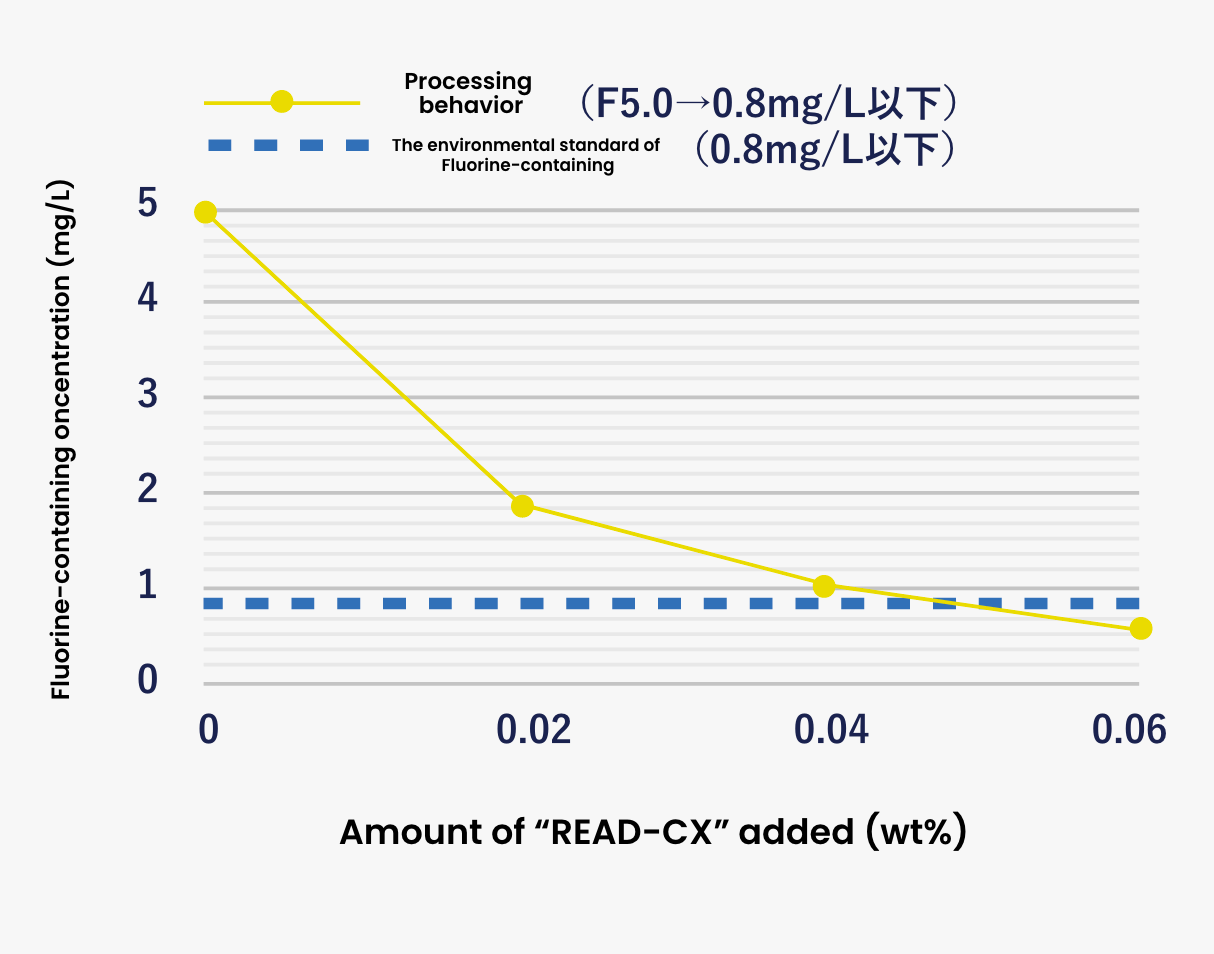
It can treat fluorine even to a low concentration range.
As a flocculant, “READ-CX” works very well for the treatment of fluorine. Unlike the calcium method, it can also be used for treatment to within a low concentration range. It also helps to inhibit the generation of sludge as adding even a small amount of “READ-CX” can be highly effective. As there are no concentration restrictions regarding “READ-CX”, it enables the treatment to low concentrations depending on the amount of chemical dosing. The graph shows the addition of READ-CX to a simulated liquid at 5 mg/L, which is lower than the wastewater standard, can treat the wastewater up to the environmental standard value of 0.8 mg/L.
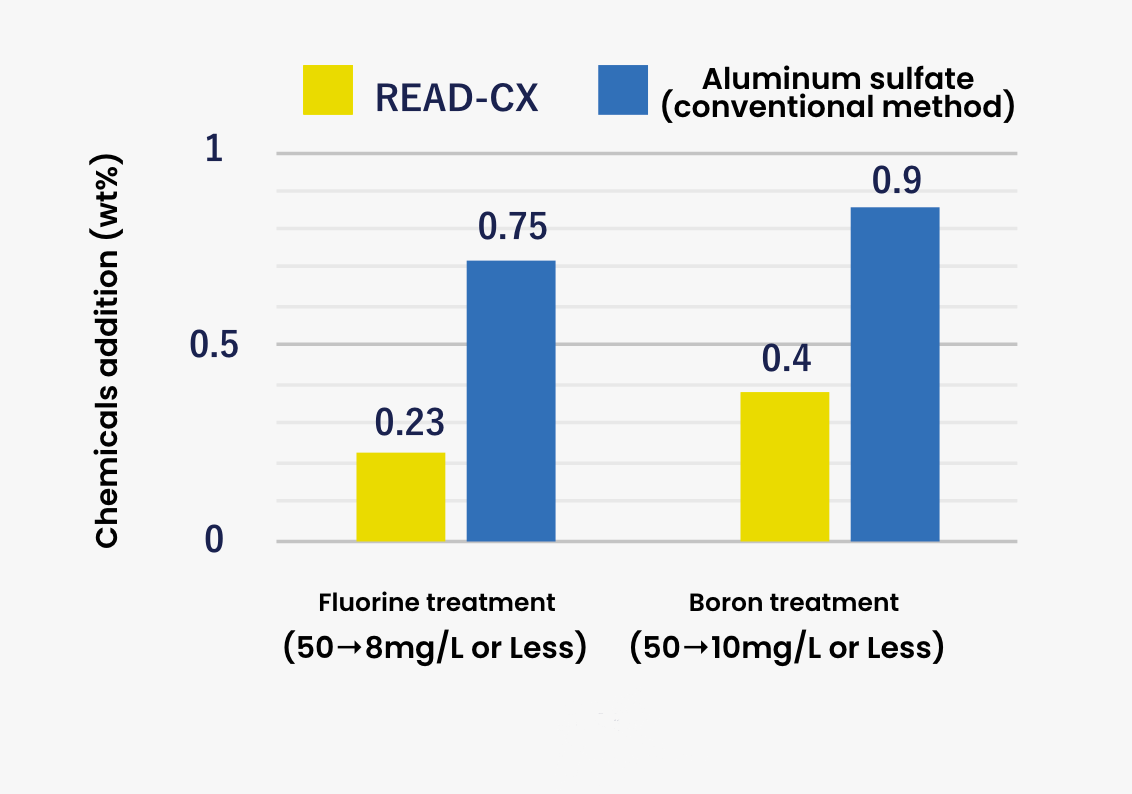
Demonstrated “READ-CX” has higher performance than the conventional method
Aluminum sulfate, which is an aluminum chemical, is commonly used to treat boron and fluorine. On the other hand, the graph shows as a data of compared with aluminum sulfate and “READ-CX”. Using the conventional method, treating fluorine to within a range from 50 mg/L to 8 mg/L requires the addition of about 0.7 wt% of chemical additives whereas “READ-CX” can achieve the same goal at about 0.2 wt%. Using the conventional method, treating boron to within a range from 50 mg/L to 10 mg/L requires the addition of about 0.9 wt% of a chemical whereas READ-CX can achieve the same goal at about 0.4 wt%, which is a one third or one half reduction of chemical additives.
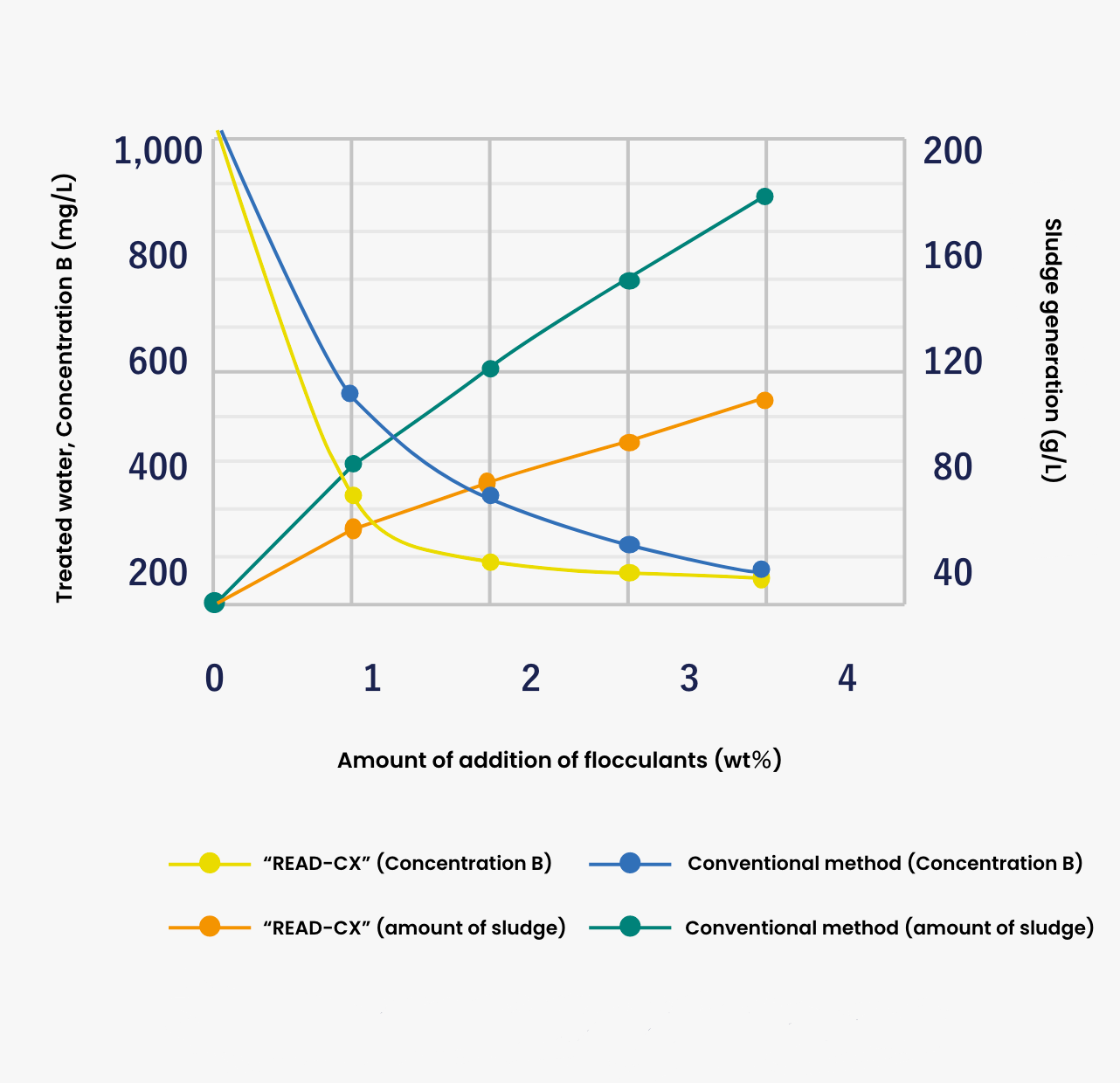
More effective than the conventional method in terms of costs as well
Treating boron entails a limitation in methodology and considerable costs. Although, “READ-CX” can demonstrate superiority over the conventional method. It works better than conventional chemicals and enables reduction of chemical addition. This can reduce the amount of sludge and reduce industrial waste disposal costs.

Other features
There are two other features, “It is a liquid with good handling properties and can easily be replaced” and “It can be used to treat boron, fluorine, arsenic, selenium, phosphorus, hexavalent chromium, lead and other elements”
Principle of water treatment by using “READ-CX”
Coagulation sedimentation method precipitates some heavy metals in the liquid and separates them as a sludge using sedimentation by adding a precipitated amount of chemicals and adjust the pH.READ-CX can remove substances such as fluorine, boron, arsenic and phosphorus.
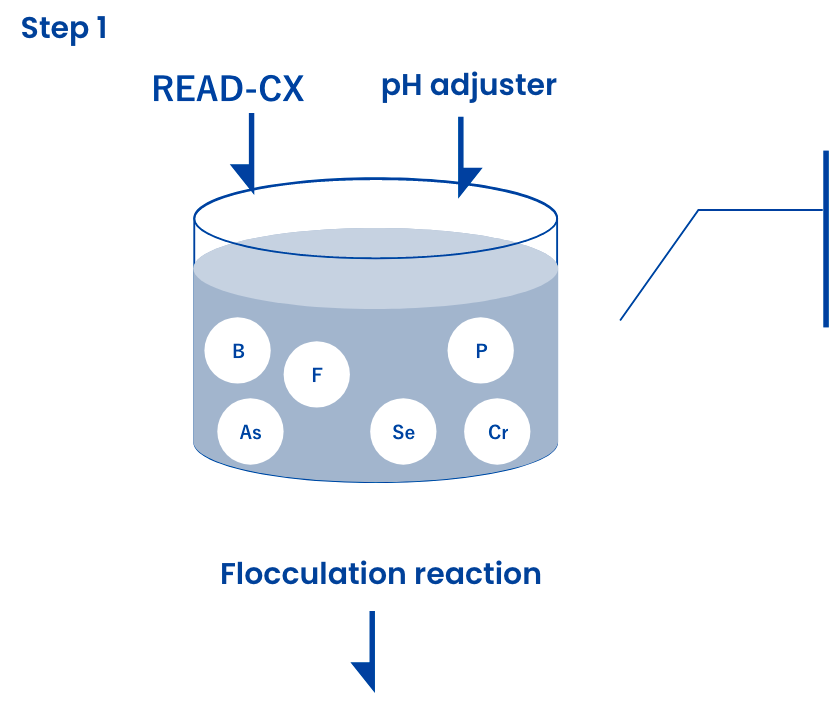
Add READ-CX and use a pH adjuster to adjust the liquid to the predetermined pH (a flocculation reaction occurs).
STEP1
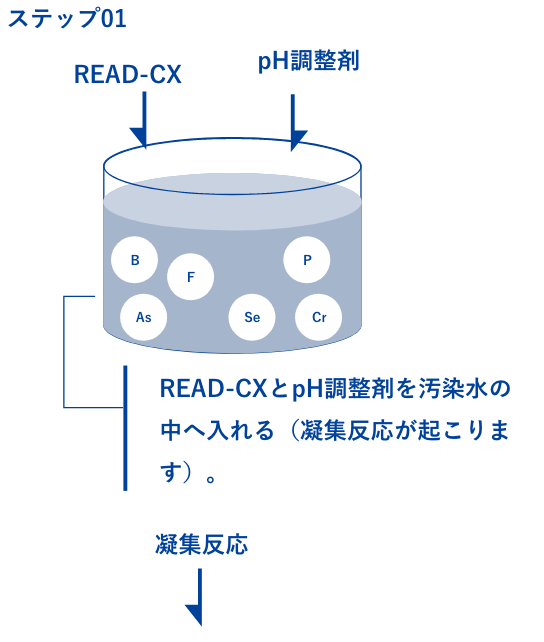
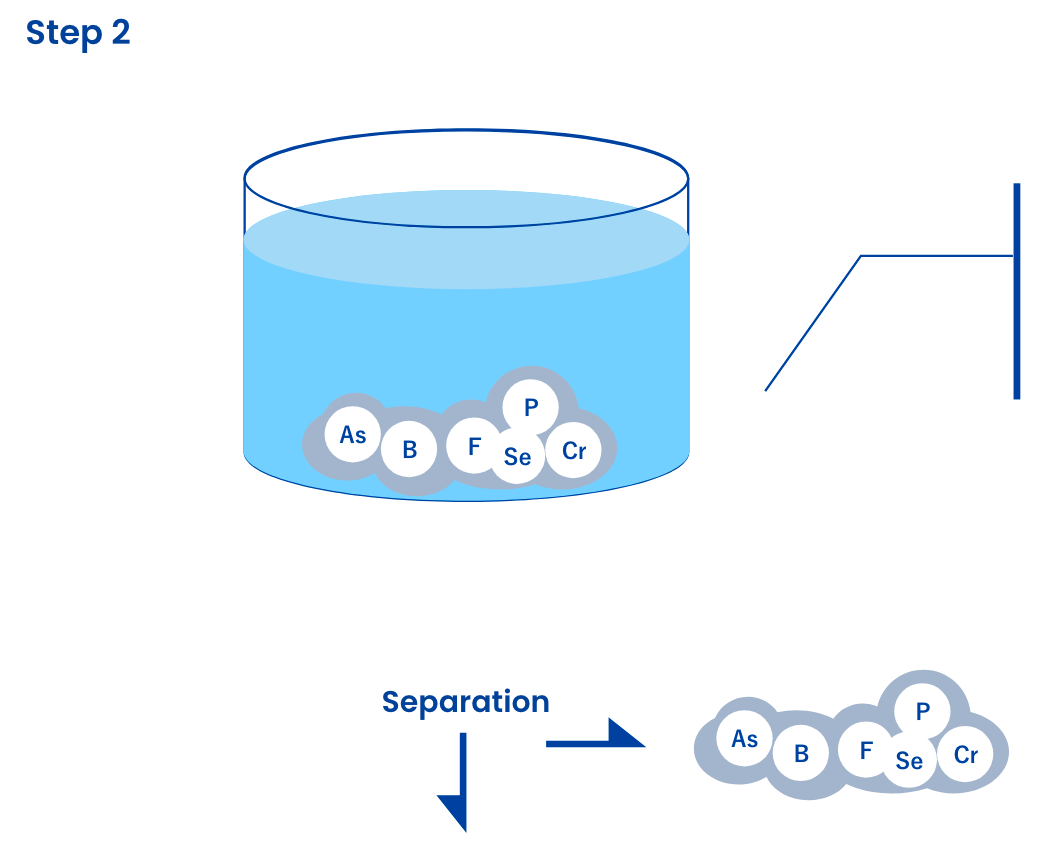
Hazardous substances transform into a sludge and settle out (The hazardous substances are removed and are disposed of as sludge from industrial waste).
STEP2
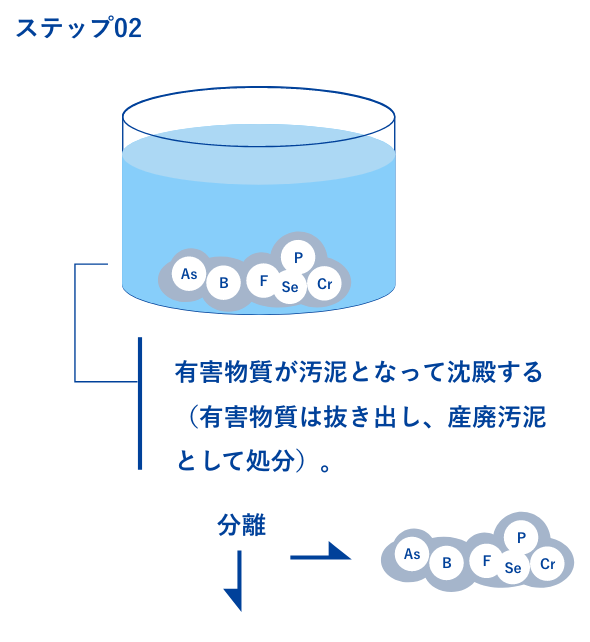
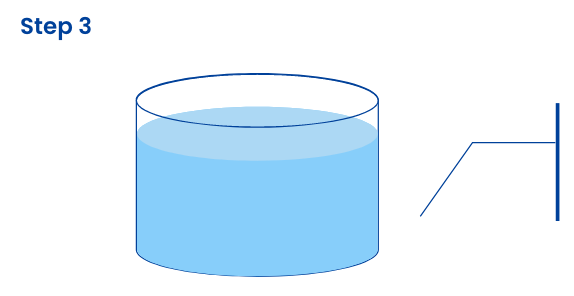
The hazardous substances are removed and the supernatant liquid is purified.
STEP3
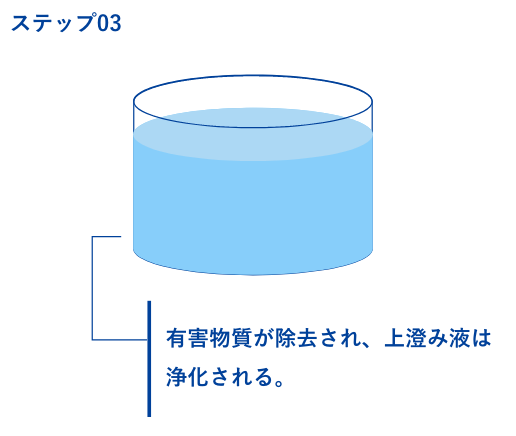
Establishment of supply systems reduces costs
READ-CX mainly composed of rare earths which is fairly expensive. Currently, we are cooperating with overseas rare earth producers and achieved a price reduction.

Implementation examples
-
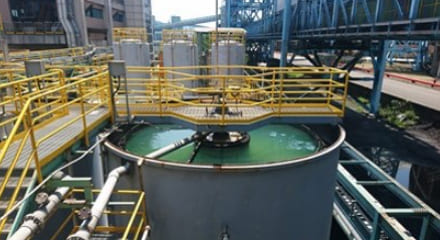
Boron in desulfurization wastewater from a thermal power station is removed using a flocculant | Additional information about adsorbents
An excessive amount of boron can adversely affect the growth …
-
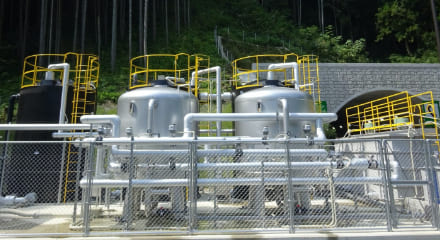
Treatment of detected arsenic from a tunnel springwater by using an adsorbent
Arsenic is carcinogenic and affect the hematopoietic function and immune system. It is also toxic to the liver and kidney. There are …
-
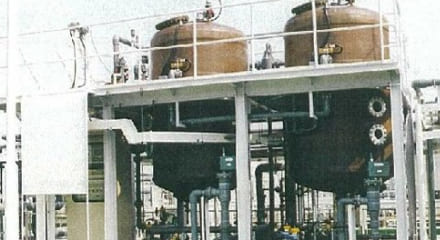
Fluorine in the wastewater from a semiconductor plant is treated with an adsorbent after coagulating sedimentation treatment
It is believed that fluorine is an effective means of preventing cavities …
Q. What form does the flocculant come in?
READ-CX flocculants are liquid type.
Q.What type of wastewater does it effectively treat?
READ flocculants can effectively treat the wastewater containing boron, fluorine, arsenic, phosphoric acid, copper, lead, selenium and hexavalent chromium.It can be used in the treatment of wastewater from coal-fired power stations, plating and semiconductor plants and other sources.
Q.How are READ flocculants different from other flocculants?
For example, fluorine, it can be treated more effectively to low concentration than other chemicals. For boron, the use of chemicals can be smaller than in the general treatment method (using aluminum sulfate and slaked lime) and can control the amount of sludge.
Q.Do READ flocculants have an expiration date?
Basically, it will not deteriorate, but we recommend that you use it within one year. However, letting flocculants stand for a long time may cause its components to settle out, so please be sure to stir it lightly before use.
